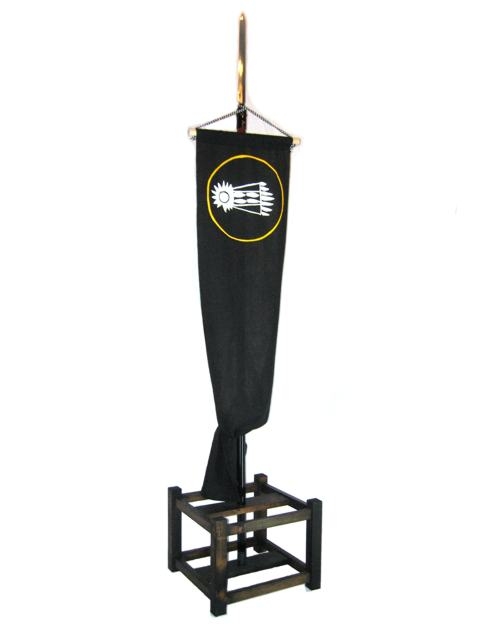This post is titled:
Baronial Banner
The baronial birthday party, this past weekend also had an Arts and Sciences competition, so I decided to make a baronial hata-jirushi banner in the same style as my baronial kataginu, and display it on the hatadai banner stand I made late last year.
Banner is black linen, cut and edged to simulate traditional Japanese fabric width, and hand painted with BMDL populace badge in modern fabric paint.
The hata-jirushi style banner is one of the three main styles of battlefield banner used during the warring-states period of Japanese history. The nobori banner has tabs along the top and one side, and its suspensory pole has a cross-piece. The sashimono is similar to a nobori, but is smaller and is typically used to mark an individual rather than a group.
Suspensory cord is hand-braided from cotton crochet thread using a 9-strand shige uchi braid. This braid is typically seen used for the sageo cords that secure a warrior's sword in the hakama waistband.
Stand is pine wood with joinery of hand-chiseled mortises and hand-sawn tenons. The completed stand was stained with iron dissolved in vinegar, and finished with linseed oil.
Hatadai stands are typically used indoors in temples to display banners and other ritual items during Shinto ceremonies like weddings.
This item was awarded the "Baron's Choice" in the competition, and I was asked to bear it and precede the Baronial procession into court!.
2012.05.28 at 12:00am EDT
All text and graphics copyright © 2007-2013 Elliott C. Evans except where otherwise noted.
[Visit my web site] [Subscribe via RSS]


